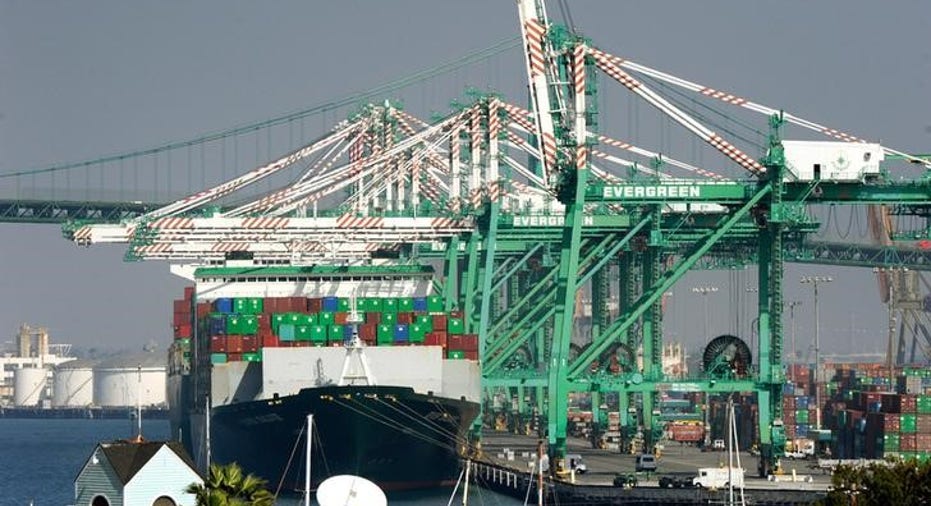U.S. trade deficit falls as exports hit 1-1/2 year high

WASHINGTON, Feb 7 - The U.S. trade deficit fell more than expected in December as exports rose to their highest level in more than 1-1/2 years, outpacing an increase in imports.
The Commerce Department said on Tuesday the trade gap dropped 3.2 percent to $44.3 billion, ending two straight months of increases. November's trade deficit was revised slightly up to $45.7 billion from the previously reported $45.2 billion.
The trade deficit rose 0.4 percent to a four-year high of $502.3 billion in 2016. That represented 2.7 percent of gross domestic product, down from 2.8 percent in 2015.
Economists polled by Reuters had forecast the trade gap slipping to $45.0 billion in December.
When adjusted for inflation, the deficit decreased to $62.3 billion from $63.9 billion in November.
The improvement in the deficit at the end of the year could set up trade to be a modest drag on growth in the first quarter.
Trade slashed 1.7 percentage points from gross domestic product in the fourth quarter, leaving output rising at a 1.9 percent annualized rate.
The economy grew at a 3.5 percent pace in the third quarter.
The Trump administration is targeting trade in its quest to boost economic growth. President Donald Trump has vowed to make sweeping changes to U.S. trade policy, starting with pulling out of the 12-nation Trans-Pacific Partnership trade pact.
Trump also wants to renegotiate the North American Free Trade Agreement (NAFTA), which was signed in 1994 by the United States, Canada and Mexico.
Economists, however, warn that the America-first or protectionist policies being pursued by the administration are a threat to the country's economic health.
In December, exports of goods and services increased 2.7 percent to $190.7 billion as shipments of advanced technology goods hit a record high.
Exports of goods and services were the highest since April 2015.
There were increases in exports of industrial supplies and materials, capital goods, consumer goods and motor vehicles.
Still, exports remain constrained by relentless dollar strength.
The dollar gained 4.4 percent against the currencies of the United States' main trading partners last year.
Exports to the European Union jumped 10.1 percent, with goods shipped to Germany surging 12.4 percent.
A Trump trade adviser has accused Germany of unfairly benefiting from a weak euro.
Exports to China, another sore point for Trump, fell 4.1 percent.
Imports of goods and services rose 1.5 percent to $235.0 billion in December, the highest level since March 2015. Part of the increase in the import bill reflects higher oil prices, as well as strengthening domestic demand.
The price of imported oil averaged $41.45 billion in December, the highest since September 2015. Food imports hit a record high, as did those of motor vehicles.
Imports of goods from China fell 7.6 percent in December. Germany saw a 1.4 percent increase in merchandise shipped to the United States in December.
The politically sensitive U.S.-China trade deficit dropped 9.0 percent to $27.8 billion in December, while the trade gap with Germany declined 6.2 percent to $5.3 billion in December.
The trade deficit with China decreased $20.1 billion to $347.0 billion in 2016. The gap with Germany narrowed $10.0 billion to $64.9 billion last year.
The United States also saw big declines in its trade deficits with Canada and Mexico in December.
(Reporting By Lucia Mutikani; Editing by Andrea Ricci; ((Lucia.Mutikani@thomsonreuters.com; 1 202 898 8315; Reuters; Messaging: lucia.mutikani.thomsonreuters.com@reuters.net)))



















